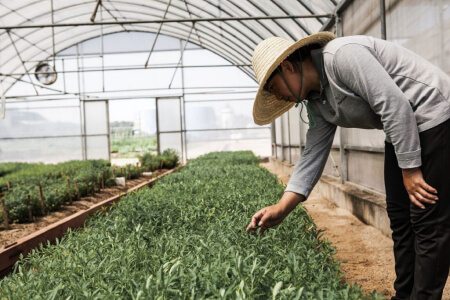Naturality of Stevia Leaf Extract
Studying the leaf through stages of the process

The sweet components of the Stevia rebaudiana Bertoni plant called steviol glycosides, are extracted and purified to make high-purity stevia leaf extracts. Ensuring these sweet components are unchanged during the purification and extraction process is an important part of the bringing stevia leaf extract from the leaf to final product. A recent study, conducted at the University of Bonn in Germany, focused on understanding what happens to these sweet components of the stevia leaf when they go through the extraction and purification process.1
Due to the complex purification process, the natural authenticity or the “naturality” of high-purity stevia leaf extracts has been questioned. Thus, the objective of this study1 was to systematically determine if the steviol glycosides are modified during the commercial extraction and purification process used to produce high-purity stevia leaf extracts (i.e. steviol glycoside sweetener ingredients). The researchers focused on the nine steviol glycosides* approved in 2010 by the global regulatory authority, the Joint Food Agriculture Organization/World Health Organization Expert Committee on Food Additives(JECFA).2 These approved nine steviol glycosides were in the original steviol glycoside JECFA approval and specification for high-purity stevia leaf extract ingredients.2
The study investigated three commercial‐scale production batches of high-purity steviol glycosides.1 The samples for each commercial batch contained a sample of the untreated stevia leaves from which the steviol glycosides are extracted, the first water infusion after the leaves have been steeped in warm water and the 95% high‐purity end product (i.e. the steviol glycoside sweetener ingredient). The samples were analyzed using ultra-violet, high-performance liquid chromatography (UV-HPLC) and high-performance liquid chromatography electrospray ionization tandem mass spectrometry (HPLC/ESI-MS/MS) to separate, identify and quantify the individual steviol glycoside molecules. The commercial samples tested in the study were provided by PureCircle Ltd., from PureCircle’s commercial extraction and purification production process of high-purity stevia leaf sweetener ingredients/extracts.
The researchers reported their results clearly show the end product of extraction and purification i.e. the commercial steviol glycoside sweetener ingredients tested in this study, with an estimated purity of more than or equal to 95%, contain the same nine steviol glycosides as the dried untreated stevia leaves and their hot water infusions. This demonstrates steviol glycosides are not affected nor modified through multiple steps in the commercial extraction and purification process.
These findings are significant because the fact that the nine steviol glycosides in the end products remain unaltered and are identical to those in the intact stevia leaves provides support for the “naturality” or natural authenticity of high-purity stevia leaf extracts, also known as, high-purity stevia sweetener ingredients.
For more information on this study, link to the full peer-reviewed publication from reference #1 below and learn more from a Q&A with the lead researcher Dr Ursula Wölwer-Rieck.
REFERENCES
- Oehme A, Wüst M, Wölwer-Rieck U. Steviol Glycosides are not altered during commercial extraction and purification processes. Int J Food Sci Technol. 2017;52:2156-62. Available at: https://onlinelibrary.wiley.com/doi/abs/10.1111/ijfs.13494
- JECFA. 73rd Meeting, Compendium of Food Additive Specifications. Mongraph. 2010;17-22.
*The nine steviol glycosides: rubusoside, steviolbioside, dulcoside A, stevioside, rebaudioside B, rebaudioside A, rebaudioside C, rebaudioside F, rebaudioside D

